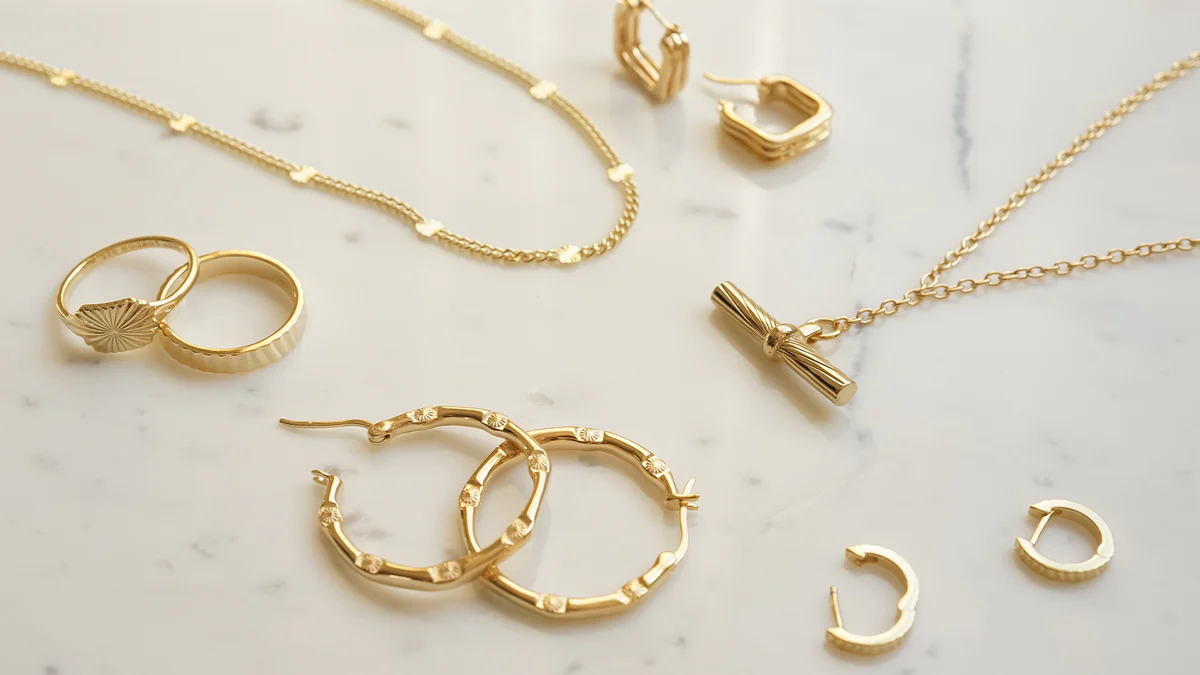Jewelry has always been more than mere decoration. Across cultures and centuries, specific symbols in jewelry have carried powerful meanings—representing love, protection, strength, spirituality, and personal milestones. Whether worn for aesthetic appeal or deeper significance, symbolic jewelry continues to capture hearts. Let’s uncover the secret meanings behind some of the most popular jewelry symbols.

1. The Heart
Perhaps the most recognizable symbol, the heart universally represents love, affection, and deep emotional connections. It’s a timeless choice for romantic gifts, celebrating anniversaries, weddings, and even self-love. In ancient times, the heart was seen as the center of human thought and emotion. Today, a heart-shaped pendant or ring still whispers the message, “You are loved.”
2. The Infinity Symbol
The sleek, figure-eight loop of the infinity symbol signifies eternity, empowerment, and endless possibilities. It often represents an unbreakable bond—between lovers, family members, or close friends. Gifting an infinity bracelet or necklace is a beautiful way to express a forever promise.
3. The Evil Eye
Rooted in Mediterranean and Middle Eastern traditions, the evil eye is believed to ward off negative energy and protect the wearer from envy or ill-wishes. Typically designed as a blue eye, this amulet has grown into a fashion staple while still retaining its protective power. Many people wear evil eye necklaces, earrings, or bracelets as everyday talismans.
4. The Tree of Life
The tree of life symbolizes growth, wisdom, and connection to all living things. With roots digging deep into the Earth and branches reaching toward the sky, it represents strength, personal development, and spiritual evolution. It’s a favorite for gifts marking new beginnings—like graduations, marriages, or the birth of a child.
5. The Lotus Flower
Emerging pure and beautiful from muddy waters, the lotus flower stands for rebirth, purity, and spiritual awakening. In Eastern cultures, especially in Hinduism and Buddhism, it holds sacred significance. A lotus jewelry piece can be a reminder to rise above challenges and maintain inner beauty and strength.

6. The Hamsa Hand
An ancient Middle Eastern symbol, the Hamsa hand is believed to bring protection, blessings, and good fortune. The hand often features an eye at the center, enhancing its protective abilities against the evil eye. Whether worn facing up (to ward off negativity) or down (to invite abundance), the Hamsa remains a cherished symbol of faith and protection.
7. The Anchor
The anchor is a symbol of stability, hope, and steadfastness. Sailors traditionally wore anchor jewelry as a reminder of home and safe journeys. Today, it often symbolizes staying grounded during turbulent times. Anchors are commonly seen in rings, charms, and cufflinks, appealing to those who seek inner strength and perseverance.
8. The Moon and Stars
Celestial symbols like the moon and stars represent guidance, dreams, and the rhythm of life. The moon often stands for femininity, intuition, and cyclical change, while stars are associated with wishes, hope, and inspiration. Wearing celestial-themed jewelry serves as a subtle nod to one’s dreams and ambitions.
9. The Feather
A feather symbolizes freedom, lightness, and spiritual ascension. Native American traditions see feathers as sacred, believing they carry prayers to the heavens. In modern jewelry, feathers can represent a connection to one’s higher self or a loved one who has passed. Feather necklaces, earrings, or charms offer a beautiful tribute to spiritual journeys and personal freedom.
10. The Claddagh
Originating from Ireland, the Claddagh depicts two hands holding a heart topped with a crown. It symbolizes love (the heart), friendship (the hands), and loyalty (the crown). Traditionally used as a wedding or friendship ring, the Claddagh’s wearing position also conveys the wearer’s relationship status—making it an intricate and heartfelt piece of jewelry.
Why Jewelry Symbols Remain Timeless
Symbols speak a universal language that words often cannot fully capture. A simple pendant or charm can carry immense personal meaning—serving as a daily reminder of one’s values, goals, or cherished relationships. Whether you choose a symbol for protection, love, growth, or freedom, wearing meaningful jewelry adds an intimate layer to your personal style.
Next time you pick out a piece of jewelry, you’ll know: it’s not just an accessory—it’s a story.
10 FAQs About Jewelry Symbols
1. Why do jewelry symbols hold such deep meanings?
Jewelry symbols often come from ancient traditions and universal themes, which resonate with human emotions, aspirations, and cultural beliefs, giving them lasting personal and spiritual significance.
2. Is the evil eye jewelry only for protection?
Primarily, yes—the evil eye is worn for protection against negativity. However, it also represents spiritual vigilance, good luck, and a reminder to stay mindful of one’s surroundings.
3. What does it mean if someone gives you a heart-shaped pendant?
Receiving a heart-shaped pendant usually signifies deep love, affection, or strong emotional bonds between the giver and the receiver.
4. Can I wear multiple symbolic pieces at once?
Absolutely! Many people layer symbolic jewelry to represent different aspects of their lives—such as wearing a lotus for spiritual growth alongside a heart for love.
5. What does an infinity ring symbolize in relationships?
An infinity ring often symbolizes an everlasting bond, endless love, and commitment between two people, making it a popular choice for couples.
6. Are there different styles of the Hamsa hand, and do they mean different things?
Yes. A Hamsa hand facing up usually wards off evil, while one facing down invites abundance and blessings. Some designs incorporate other symbols, like the eye, for added protection.
7. What culture is the Tree of Life symbol from?
The Tree of Life appears in many cultures, including ancient Egyptian, Celtic, Norse, and various religious traditions, symbolizing interconnectedness and spiritual wisdom.
8. Why is the anchor a popular tattoo and jewelry symbol?
The anchor’s meaning of stability, strength, and hope makes it a powerful emblem for anyone seeking to stay grounded amid life’s challenges.
9. Is the lotus flower symbol exclusive to Eastern cultures?
While the lotus has strong roots in Eastern spirituality, its symbolism of rebirth, purity, and resilience has gained universal appreciation and is now embraced worldwide.
10. How do I choose the right symbol for myself or as a gift?
Think about the personal story or message you want to convey. Choose a symbol that resonates with your or the recipient’s life experiences, values, or aspirations.
